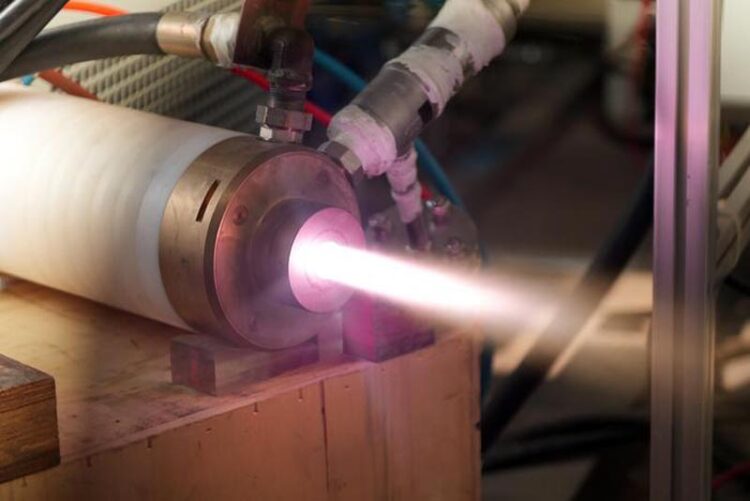New design prolongs the lifespan of plasma torches

The plasma flame lasts for more than 160 hours.
Credit: Weiwei Zhao
This could be forever…
Thanks for a new design contributed by a research team led by Prof. ZHAO Peng from Hefei Institutes of Physical Science (HFIPS) of Chinese Academy of Sciences (CAS), the operation time for plasma torch was extended from several days to several years.
“We made the world’s longest-lasting plasma torch,” said Prof. ZHAO.
Plasma torches, devices that generate thermal plasma, are pivotal in various industries due to their ability to efficiently produce high-temperature plasma. It can be applied in many fields including low-carbon metallurgy, powder spheroidization, carbon material preparation, and advanced material spraying. However, their limited lifespan hindered large-scale application. The conventional fixed cathodes necessitate replacement upon depletion, resulting in short lifespans and high maintenance costs.
In this study, researchers developed a continuous-feed cathode system, which allowed for quick supplement of cathode that have been worn down. This operation eliminates the limitation of lifespan, offering nearly limitless operational longevity of the plasma flame.
“The design overcomes five major hurdles,” said Senior Engineer LI Jun, who has been overseeing this experiment for 160 hours, “That includes electrical conductivity, thermal conductivity, sealing, water cooling, and continuous propulsion mechanism.”
“As for conventional plasma flame, 160 hours marks the end, but here it’s just the beginning,” he added.
This significant advancement propels the industrialization of plasma applications, ushering in a new era of efficiency and sustainability.
Media Contact
Weiwei Zhao
Hefei Institutes of Physical Science, Chinese Academy of Sciences
annyzhao@ipp.ac.cn
Office: 86-551-655-91206
Original Source
https://english.hf.cas.cn/nr/bth/202403/t20240319_658605.html
Media Contact
All latest news from the category: Physics and Astronomy
This area deals with the fundamental laws and building blocks of nature and how they interact, the properties and the behavior of matter, and research into space and time and their structures.
innovations-report provides in-depth reports and articles on subjects such as astrophysics, laser technologies, nuclear, quantum, particle and solid-state physics, nanotechnologies, planetary research and findings (Mars, Venus) and developments related to the Hubble Telescope.
Newest articles

A blueprint for mapping melting ice sheets
Researchers in the Stanford Radio Glaciology lab use radio waves to understand rapidly changing ice sheets and their contributions to global sea-level rise. This technique has revealed groundwater beneath Greenland,…

Water hyacinth plant pots – utilization of an invasive species
Together with Fiber Engineering GmbH, the DITF presents a process for the production of biodegradable plant pots. The products are cost effective and competitive. At the same time, the production…

Current research on the new 6G mobile communications standard
Nursing care robots, autonomous driving, digital twins: all of these high-tech applications will play an essential role for the new 6G mobile communications standard. The first commercial 6G networks are…



